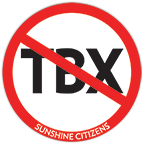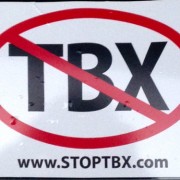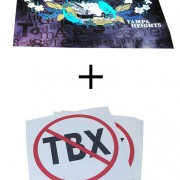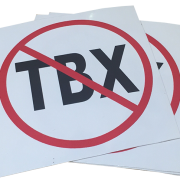Statement by Howard Harris, Jr.
All Tampa Bay should oppose the proposed I-275 toll road. First, the proposed plan will destroy 100 homes, 30 businesses, public gardens, and a community center in the Tampa Heights-Seminole Heights area. It would contaminate these two neighborhoods with a cesspool of noise and air pollution.
Second, according to Goggle Maps, during the hours of 7am to 9:30am and 4:30pm to 7:00pm, it takes over an hour to travel via car to and from Bearss Ave and Downtown Tampa. During most other hours, the trip can range from 15 minutes to 34 minutes. Yet, DOT is promoting building a toll road along this route for about $3 billion or $275 million/mile The toll, during peak times, is estimated to be $18/per one way trip and $36/per round trip. Common sense says, at best, this “Lexus” toll road will be used less than 5 hours/day for 5 days/week by only the well-heeled who can afford $18/trip during rush hour.
Third, history’s lesson is that Tampa Bay’s roadway expansions do not reduce congestion. Case in point, millions were spent on the I-275 expansion from Malfunction Junction to West Shore. Just months after the completion, that section is just as congested as ever. Additionally, the noise level and pollution of homes on the north side of I-275 and west of Lois Avenue are inundated with noise and pollution. Much of the shrubbery in the block nearest the exit ramp expansion is covered with black oily soot. Thus, Tampa Bay earned the dubious distinction of being ranked No. 11 in the nation for traffic congestion, according to TomTom International.
Additionally, the Florida Consumer Action Network Foundation, in conjunction with the Frontier Group and the nonprofit U.S. Public Interest Research Group’s Education Fund, identified The Tampa Bay Express project as one of the 12 worst highway projects in the United States.
Hence, since expansions do not work, a paradigm shift is needed to resolve Tampa Bay’s traffic congestion. The logical solution requires a 10% or more reduction of the number of cars on the road and a replacement mode of travel that is more comfortable, cheaper, and faster for that 10% of the commuting public. An initial solution could be the Bus on Shoulder System (BOSS) which allows buses to use highway emergency lanes. This has proven to be successful in reducing travel time and congestion in over ten states. The direct costs of implementing BOSS along I-40 in North Carolina was about $2,000/mile and was primarily for signs. Thus implementing BOSS along the nine miles of I-275 from Bearss Avenue to downtown Tampa would be a one-time cost of about $18,000 and not billions of dollars for a toll toad.
BOSS coupled with a subsidized marriage to Lyft/Uber is the other leg of this solution to encourage motorist to use public transportation. Lyft/Uber could move people from Point A (for instance, homes in a ten mile radius around I-275 and Bearss) to Point B (an express bus hub located near Bearss and I-275). The express bus would then travel (initially in a BOSS lane and later on in existing dedicated lane) on I-275 to the Hart Line Marion Transit Center near Scott and Tampa Street in Downtown Tampa. From this hub, other express buses would take customers to the airport, etc. or Lyft/Uber would deliver riders locally. The same scenario would be repeated on I-4, I-75, and major thoroughfares such as Nebraska, Adamo Drive, Dale Mabry, etc.
Thus, a subsidized hybrid public/private high-functioning mass transit system would relieve traffic congestion, thereby relieving the need to cure Malfunction Junction and the stress on the Howard Frankland Bridge. This would also reduce auto insurance rates and other costs of auto ownership. Most importantly, Tampa Bay fatalities from traffic accidents could significantly be reduced from one of the highest in the nation at 12.6 deaths per 100,000 residents as reported in 2009. Other expenditures could be used to return Nebraska Ave which parallels I-275 back from two lanes to four.
Another less costly solution used in many cities such as Atlanta and Miami is dedicated lanes for two or occupants/car and busses. An existing lane could be turned into a dedicated lane. Again this reduces the number of vehicles on the road and thereby reduces air pollution and congestion. This was achieved in Miami. According to Yvette Ruiz-Paz of the Miami Transportation, express bus service increased bus ridership by 32 percent. That could equate to 32 cars out of 100 motorists not driving on the roads.
In addition to the above, travel time and congestion could be reduced by synchronizing traffic signals. According to the Texas A&M Transportation Institute, the cost could range from $30,000 to $50,000 per intersection with a long run reduction in congestion from anywhere from 5 percent to 40 percent. Assuming 100 traffic signals on Dale Marby, Florida Avenue, and Nebraska between down Tampa and Bearss Avenue, the cost for synchronization for 300 traffic signals at $50,000/per light would be about $1.5 million. This is a far cry from spending billions on a toll road with the partial destruction of two neighborhoods.
So it is past time for DOT to stop the single minded approach of more pavement is the only means to deal with traffic congestion.





